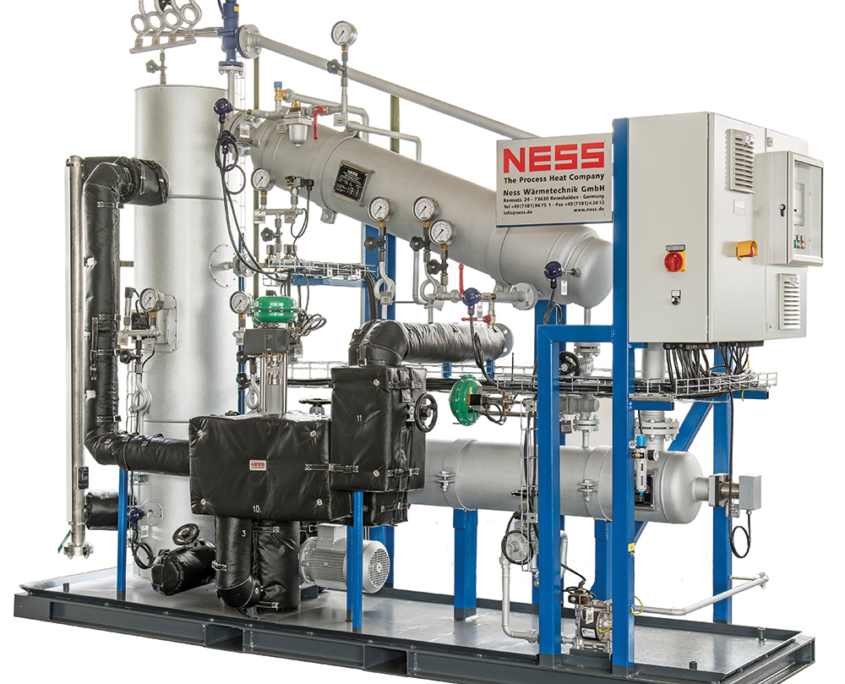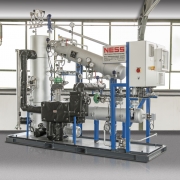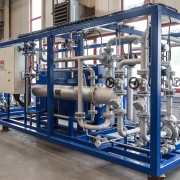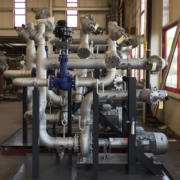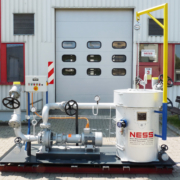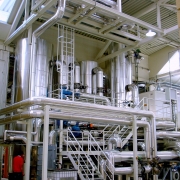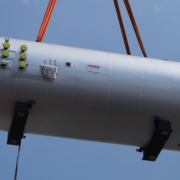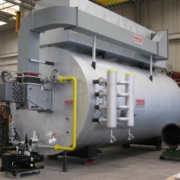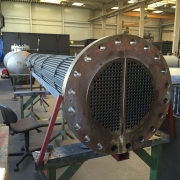Light-ends in thermal oil systems –
A lower flash point as a gradual, often underestimated danger
Along with the acid value and the Conradson carbon value, the light-ends content in the thermal oil is one of the three most important oil parameters, which must first be analysed and then managed. All of these parameters allow conclusions to be drawn on the quality of the oil and the associated effects on the plant’s operation.
“It is important to understand and actively address the connections between the three most important oil parameters” says Dietmar Ness, one of the Managing Directors of NESS Wärmetechnik GmbH. “Each of these parameters affects the safety, availability, longevity or efficiency of your plant. The challenge is balancing these values. You’re creating a type of structure, if you will.”
Light-ends occur in mineral and synthetic thermal oil as decomposition products. To be more specific: For thermal oil plant conditions, this is already the case at a relatively moderate temperature. “Relatively” in this context means significantly lower than the maximum possible temperature in a thermal oil plant, however this is still hot (e.g. 200 °C). As a rule of thumb, with generic mineral thermal oil, the quantity of light-ends formed doubles for every 10°C increase in temperature.
With a 50,000-litre plant volume and a 280°C operating temperature, there would be 1,750 litres of light-ends each year.
The light-ends have drastic effects on the plant’s flashpoint, since it reduces massively with the increasing light-ends content. Without flashpoint management, this only becomes apparent very late on. Now, quick action is required, since light-ends are highly flammable mixtures, which can react with atmospheric oxygen and consequently put the operational safety at risk. A light-ends content that is too high (reference value: >3%) can lead to damage to the parts, such as cavitation on the pump, and, in the event of entering into the atmosphere, to a fire or an explosion.
Boiling out the plant or changing the oil can help in the short- to mid-term and are both connected with high operating costs and plant downtime. It is consequently recommended that an active flashpoint management is introduced for a safer plant operation with less downtime.
“In principle, the decomposition of thermal oil is a process that takes place during plant operation and cannot be stopped”, Dietmar Ness says. “It is rather a matter of removing the light-ends from the thermal oil and simply adding fresh oil over time. The whole thing is best done sustainably and not affecting the operation in any way. I think therefore we have found a smart idea.”
With the NESS light-ends removal system, light-ends can be removed cost-efficiently and permanently even during plant operation, without plant downtime for boiling out the light-ends or changing the oil. This active flashpoint management leads to a constantly high flashpoint for a continuously safe plant operation. Even plant volumes up to 250,000 litres of oil can be effortlessly maintained at a constant level with the largest light-ends removal system, the NALD-250i.
“For us, it is also very important to keep in touch with our customers and to support them as best as we can with the correct setup and operation of the system. Therefore, we would like to offer you our remote maintenance option. This gives our service engineers an insight into the control and function of the light-ends removal system, and allows them to carry out the necessary adaptions quickly online without having to be on site with a service call”, Dietmar Ness concludes. “We have gathered optimum experience with this. Particularly, when our customers operate their plants abroad, this offers our service engineers the possibility to change the system quickly and cost-efficiently, without any travel costs.”



